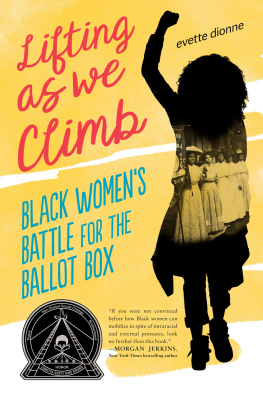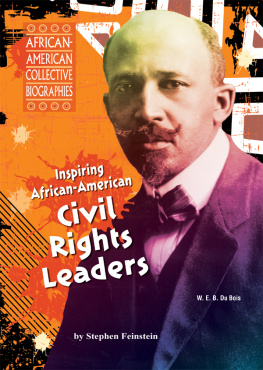


CONTENTS
Table of Contents
Guide
2018 by Janet Dewart Bell
All rights reserved.
No part of this book may be reproduced, in any form, without written permission from the publisher.
Requests for permission to reproduce selections from this book should be mailed to: Permissions Department, The New Press, 120 Wall Street, 31st floor, New York, NY 10005.
Published in the United States by The New Press, New York, 2018
Distributed by Two Rivers Distribution
ISBN 978-1-62097-336-3 (e-book)
CIP data is available
The New Press publishes books that promote and enrich public discussion and understanding of the issues vital to our democracy and to a more equitable world. These books are made possible by the enthusiasm of our readers; the support of a committed group of donors, large and small; the collaboration of our many partners in the independent media and the not-for-profit sector; booksellers, who often hand-sell New Press books; librarians; and above all by our authors.
www.thenewpress.com
Book design and composition by Bookbright Media
This book was set in Scala, Berkeley, and Lato
10 9 8 7 6 5 4 3 2 1
In memory of
Derrick Bell,
beloved husband, courageous prophet, impassioned feminist,
steadfast and gentle warrior for racial and social justice,
and
Willie Mae Neal,
beloved mother, wonder woman, freedom torch bearer, true
believer in the promise of America.
May their lives continue to inspire and guide us.
The Civil Rights Movement was one of the most dramatic periods of American history, marked by rapid and profound change. During this short span of timefrom the 1950s to the 1970sAfrican Americans led the fight to free this country from the vestiges of slavery and Jim Crow. African American women played significant roles at all levels of the Civil Rights Movement, yet too often they remain invisible to the larger public. While some African American women led causes and organizations, such as Dorothy Height, the president of Delta Sigma Theta sorority and the National Council of Negro Women, and Dovie Hudson, the NAACP president in Leake County, Mississippi, others did not have titles or official roles. Cooks such as Georgia Gilmore organized to raise money to support the Montgomery bus boycott. They didnt stand on ceremony; they simply did the work that needed to be done. They raised money and provided housing and solaceall without expectation of personal gain. These often unnamed women helped to construct the cultural architecture for change.
African American women led a wide range of efforts to desegregate public accommodations and to secure voting rights; they engaged in actions across a range of fields, including law, education, and journalism. Women leaders, such as the crusading anti-lynching journalist Ida B. Wells-Barnett and Rosa Parks, whose courageous refusal to surrender her seat to a white person sparked the Montgomery bus boycott, were also anti-rape activists, trying to protect black women from the white southern tradition of droit de seigneur, literally, the right of the lord. In the antebellum and Jim Crow South that meant black womens lives and bodies did not matter; white men abused and raped black women at will and without punishment. African American women leaders addressed the most important and volatile issues of the times, from segregation to lynching, from education to economic justice. Every civil rights campaign included African American women who made important intellectual and political contributions.
Prior to the Civil Rights Movement in the United States in the midtwentieth century, African American women played significant roles in struggles for racial justice. Through activities in churches, schools, organizations, and the black womens club movement, African American women were integral to their communities survival and advancementdeveloping social justice and social programs. In particular, the black womens club movement, which started in the late nineteenth century through a concerted effort to combat lynching, developed organizational and leadership skills. The National Association of Colored Womens Clubs, founded in 1896, had the motto lifting as we climb, meaning that as African American women worked to climb the social and economic ladders, they intentionally and simultaneously lifted African American communities. This tradition of service and sacrifice laid an aspirational and practical foundation for womens leadership during the Civil Rights Movement, by recognizing social responsibility and community organizing.
There were many civil rights leaders throughout the country. People put their lives on the line through direct action, such as sit-ins, freedom rides, and legal challenges including the children and parents of those first to integrate schools and other public facilities; they were dramatic catalysts for transformative change. People who lived and worked in the heat of the civil rights cauldron were without question the heart and soul of the Movement. Their heroic actionsoften putting themselves and their families in harms waywere without equal. Myrlie Evers always knew the dangers that she and her husband faced, but they persisted. The young people of SNCC, exemplified by Judy Richardson, worked in hostile environments and faced direct assaults. People who raised funds or provided housing and food to civil rights workers put their own lives and livelihoods in jeopardy. In many instances, isolated and vulnerable sharecropper families in the rural South participated in the Civil Rights Movement in this way. Leah Chase, in defiance of Jim Crow laws, provided more than food to civil rights workers; she provided a safe haven. Some other participants contributions were not as dramatic or fraught with danger but necessary to the freedom struggle. June Jackson Christmas and her husband, Walter, opened their home in New York City to provide respite for civil rights workers from the South. She also provided counseling and fundraising support.
Beyond Rosa Parks, Coretta Scott King, and Dorothy Height, most Americans would find it difficult to name women civil rights leadersthough there were many. Lighting the Fires of Freedom presents interviews with nine women leaders in the Civil Rights Movement, some well-known and some not. Leah Chase, June Jackson Christmas, Aileen Hernandez, Diane Nash, Judy Richardson, Kathleen Cleaver, Gay McDougall, Gloria Richardson, and Myrlie Evers all have wonderful and complex stories. Their stories are in the tradition of earlier women engaged in freedom struggles such as Mary McLeod Bethune, Ida B. Wells-Barnett, and Nannie Helen Burroughs. Like these earlier heroines, the individual and collective life journeys of the women in this book provide inspiration and lessons upon which todays social movements can build. In their passionate and committed lives, these women confronted American racism with bold resolve.
African American Women as Leaders
Black women brought unique focus and perspectives to their work as leaders in the Civil Rights Movement. With double consciousnessawareness of sex and raceand triple consciousness adding class, these women did work that was a pragmatic and necessary response to societal conditions. In


















